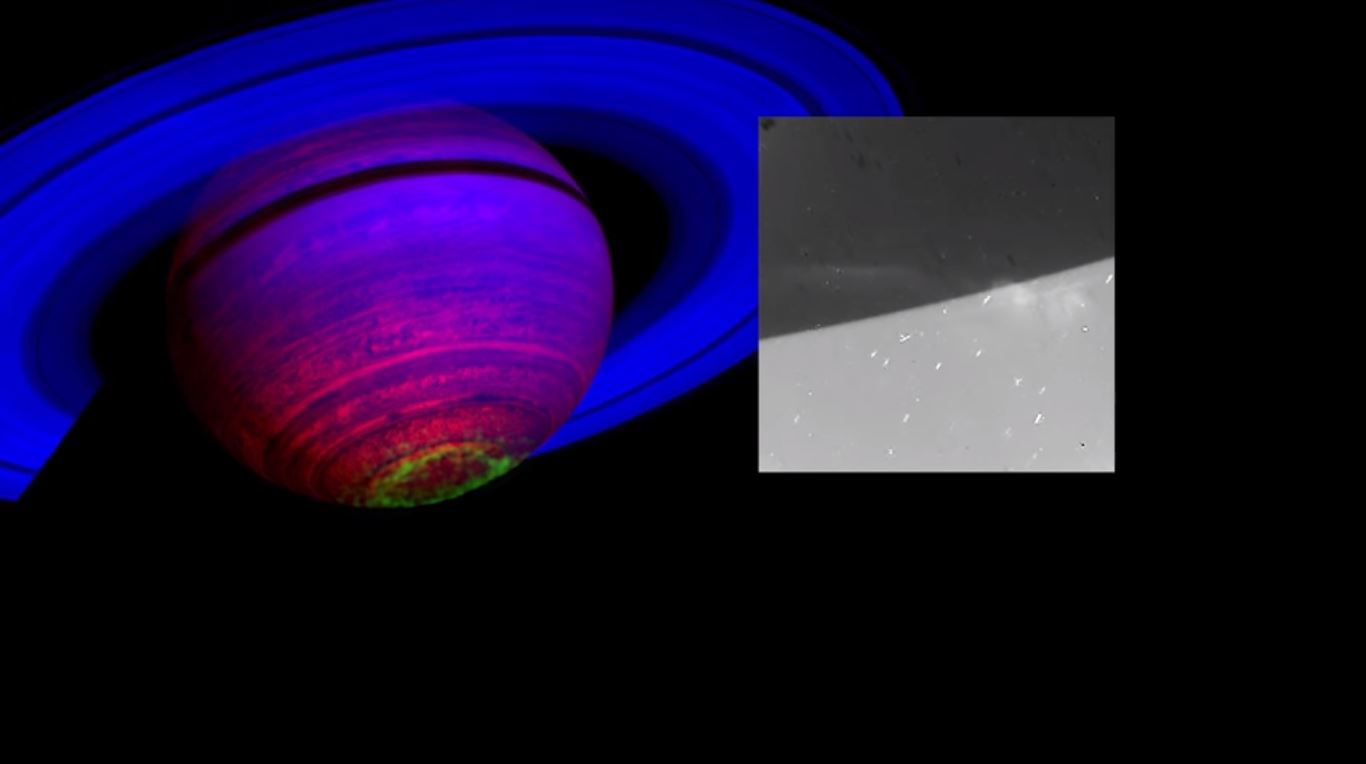Cassini Spots 'Ghostly Curtains of Light' Near Saturn's South Pole
The Cassini spacecraft at Saturn recently observed a light show on the planet's southern hemisphere: auroras, glittering in the gaseous atmosphere.
Similar to auroras on Earth, Saturn's auroras are formed by charged particles raining down on the planet, colliding with the atmosphere and creating light, according to a statement from NASA. The charged particles come from the solar wind, a steady stream of material emanating from the sun.
A video from NASA shows the "ghostly curtains of light" billowing through Saturn's atmosphere. The black-and-white video was captured on July 20, in visible light. The technicolor photograph that serves as the backdrop in the video was taken in 2008 in near-infrared light, and is false-colored to highlight the ring of auroras around the planet's pole. [Cassini's 'Grand Finale' at Saturn: NASA's Plan in Pictures]
Cassini is moving around Saturn, but kept its gaze fixed on the same point during these observations, which lasted more than an hour, according to the statement.

"Some of the stars seem to make a slight turn to the right just before disappearing," officials said in the statement. "This effect is due to refraction — the starlight gets bent as it passes through the atmosphere, which acts as a lens. Some of the stars seem to make a slight turn to the right just before disappearing. Random bright specks and streaks appearing from frame to frame are due to charged particles and cosmic rays hitting the camera detector."
This is not the first time scientists have spotted auroras on Saturn. They were discovered by the Pioneer 11 probe, according to NASA, and have been studied by the Voyager probes, the Hubble Space Telescope and Cassini.
The Cassini spacecraft, now at the end of its mission, is headed for a dive into Saturn's atmosphere on Sept. 15.
Get the Space.com Newsletter
Breaking space news, the latest updates on rocket launches, skywatching events and more!
Follow Calla Cofield @callacofield. Follow us @Spacedotcom, Facebook and Google+. Original article on Space.com.
Join our Space Forums to keep talking space on the latest missions, night sky and more! And if you have a news tip, correction or comment, let us know at: community@space.com.

Calla Cofield joined Space.com's crew in October 2014. She enjoys writing about black holes, exploding stars, ripples in space-time, science in comic books, and all the mysteries of the cosmos. Prior to joining Space.com Calla worked as a freelance writer, with her work appearing in APS News, Symmetry magazine, Scientific American, Nature News, Physics World, and others. From 2010 to 2014 she was a producer for The Physics Central Podcast. Previously, Calla worked at the American Museum of Natural History in New York City (hands down the best office building ever) and SLAC National Accelerator Laboratory in California. Calla studied physics at the University of Massachusetts, Amherst and is originally from Sandy, Utah. In 2018, Calla left Space.com to join NASA's Jet Propulsion Laboratory media team where she oversees astronomy, physics, exoplanets and the Cold Atom Lab mission. She has been underground at three of the largest particle accelerators in the world and would really like to know what the heck dark matter is. Contact Calla via: E-Mail – Twitter









